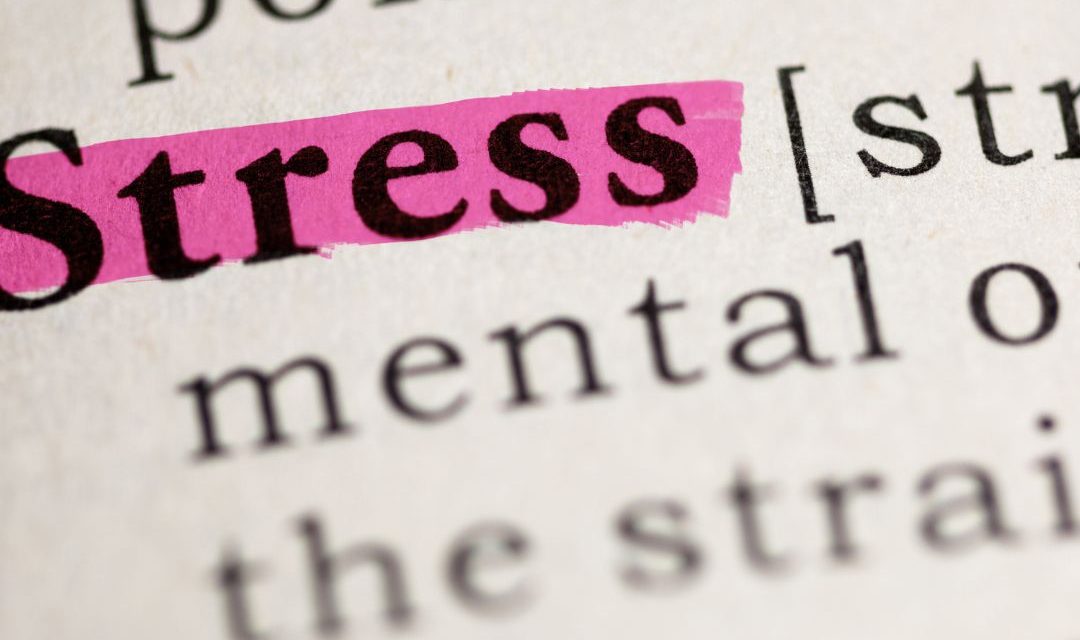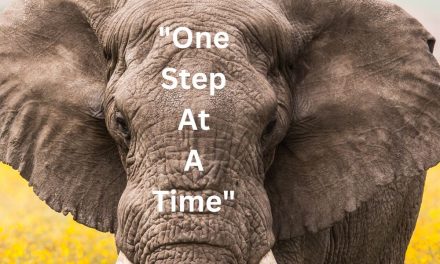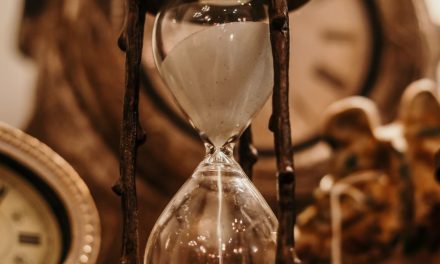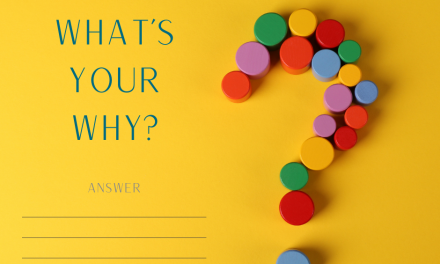When I was in third grade, my final report card included a note from my teacher.
“I hope next year Lisa’s tummy aches will be gone!”
Ouch! I was already dealing with that much stress at eight years old.
I’ve spent a lifetime seeking techniques to tame the stress monster. Stress is nasty as it affects every cell in our bodies. More medical research being published linking prolonged or chronic stress to major illnesses. Our doctors urge us to exercise to reduce stress. Apps are created to help us stop stress eating. We worry, have fears, and some days the world seems out of control. It all adds to our overall levels of stress.
The good news is that we don’t need an expensive gym membership or a large blocks of time to incorporate some extremely effective stress-reduction techniques.
You might notice a common theme in my top five techniques. I’m a huge proponent of multi-taskers both in my kitchen and in my life! Each of my top five gives you lots of ROI (return on investment). They all have multiple benefits for the body beyond reducing stress.
You’ll might also notice that I’m not including yoga. Why? A long ago neck injury left my cervical spine in the shape of an S. I’ve spent years working with a chiropractic neurologist to recover. I stick with what keeps my neck as healthy as possible.
Plus, this is my top 5 and I’m only including those techniques that I regularly use. If yoga is one of your favorites, that’s wonderful! I’m thrilled you’ve found what works best for you!
And that’s the ultimate goal here…figure out what works best for you and then DO IT!
Our formula is simple: highly effective technique + easy to include in our day = the right one for us!
First, let’s look at my top 5 free stress management techniques.
1) Box Breathing aka Breath Work
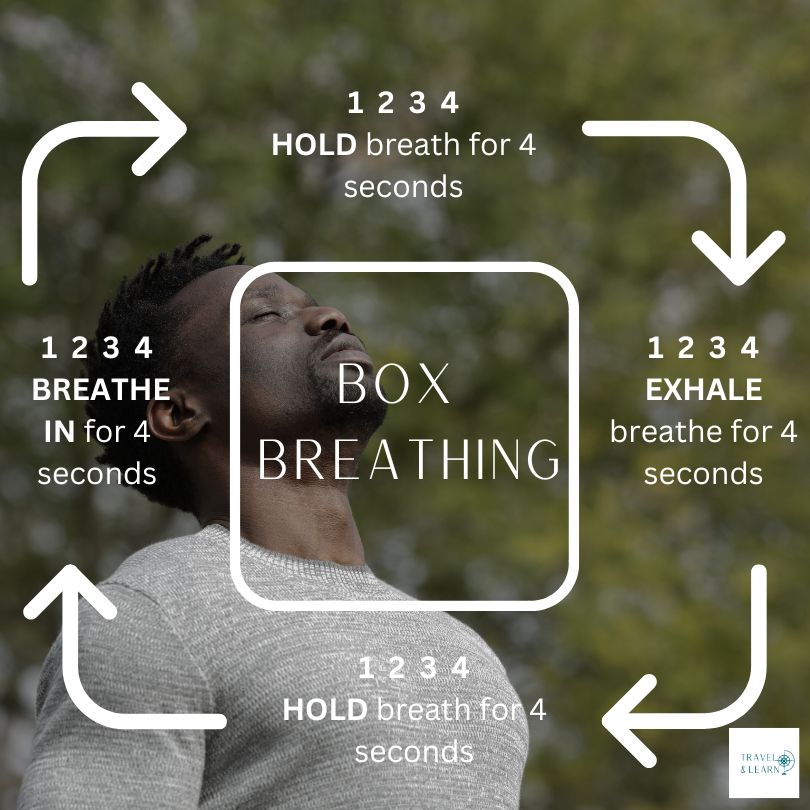
This is one of my all-time favorites because…
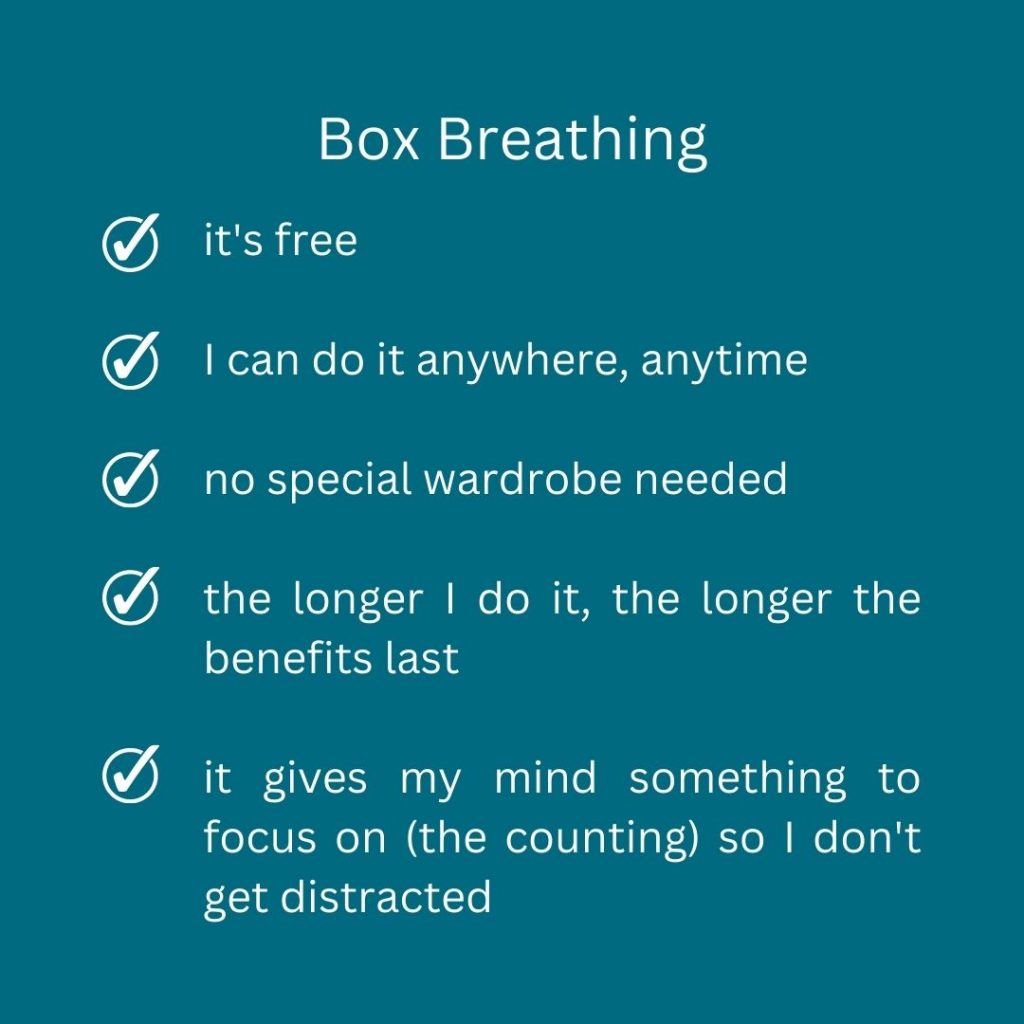
Box breathing in particular was very effective for me when I was going through my year of cancer treatments. It worked to help me fall back to sleep in the middle of the night when the prednisone tried to keep me awake. It calmed my anxiety when the pre-meds drove my mind bonkers. It restored my body’s return to full, deep breathing as I recovered from med-induced pneumonitis. It was one of the most important and consistently effective tools in my toolkit that year.
I still use it during immediate stress and daily to increase vagal nerve tone, reducing how long my body shifts out of a fight-or-flight state.
I recommend you start with just a few cycles and slowly build up to minutes as it becomes easier. If you feel a bit dizzy, stop for that session. Slowly increasing your breath capacity is your goal, not passing out on the floor!
2) The Melt Method
I purchased my Melt Method foam roller, and tiny hand and foot therapy balls years ago. When I started working with the chiropractic neurologist, he was shocked that I continually scored so well on his neurological tests for balance. I didn’t respond in the way he expected me to. What made the difference? I was doing the Melt Method daily foot treatment. My ten-minute-per-day investment was reaping a substantial ROI!
Since then I’ve incorporated more of the Melt Method’s techniques into my regular healing routines.
Developer Suzi Hitzmann combined some key aspects of well-established techniques with her own developing research into neuro fascial science. The program is easy to learn, the simple tools are highly portable, and the benefits to your body go well beyond stress reduction!
When we first started traveling, I insisted on bringing only a few items. My Melt Method foam roller and the small treatment balls were on that list. Now they’ve gone digital and you can follow along with new videos anytime.
3) Walking
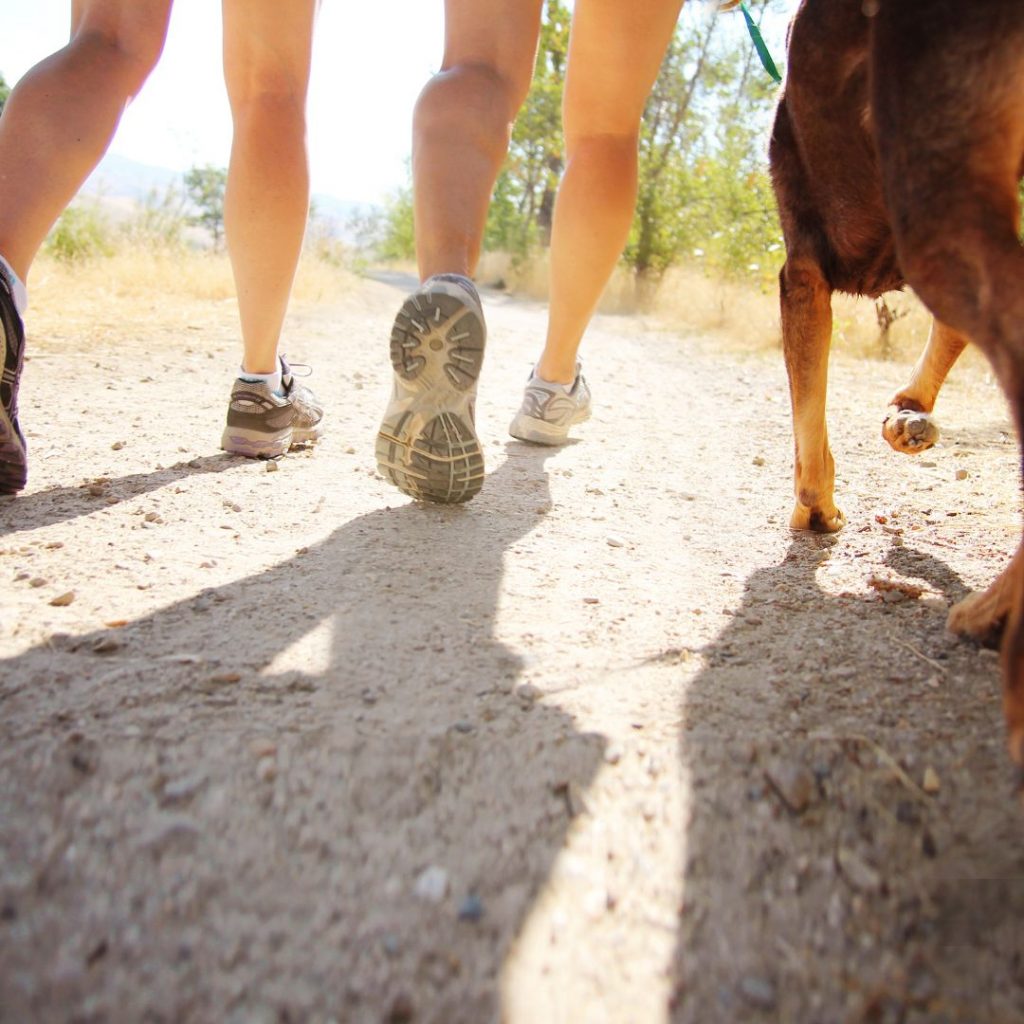
Every day someone touts the benefits of walking. It relieves stress, releases endorphins, helps you lose or maintain weight, and keeps your joints lubricated…the list seems endless!
For good reason! Walking is free with a very high ROI. My post-cancer treatment target is 150 minutes per week or thirty minutes five times a week. You can walk during your lunch break or to and from school or work.
People get creative by getting off the train a stop or two early and walking the rest of the way. Or walking around the baseball park or soccer field during their kids’ games. There are many ways to sneak in those thirty minutes!
Your pace is less important than the duration you spend walking. If you’re new to walking, start slowly. In the past, during chemotherapy treatments, it was enough for me to be walking around inside throughout the day. As I grew stronger, I resumed walking 50 steps outside and increasing my distance five steps at a time. I was walking the same number of steps for weeks! I eventually shifted to measuring my walks by time.
Each time I’ve had to take an extended break from walking, I start back at those 50 steps because I prefer to begin with an achievable goal.
4) Lifting Weights
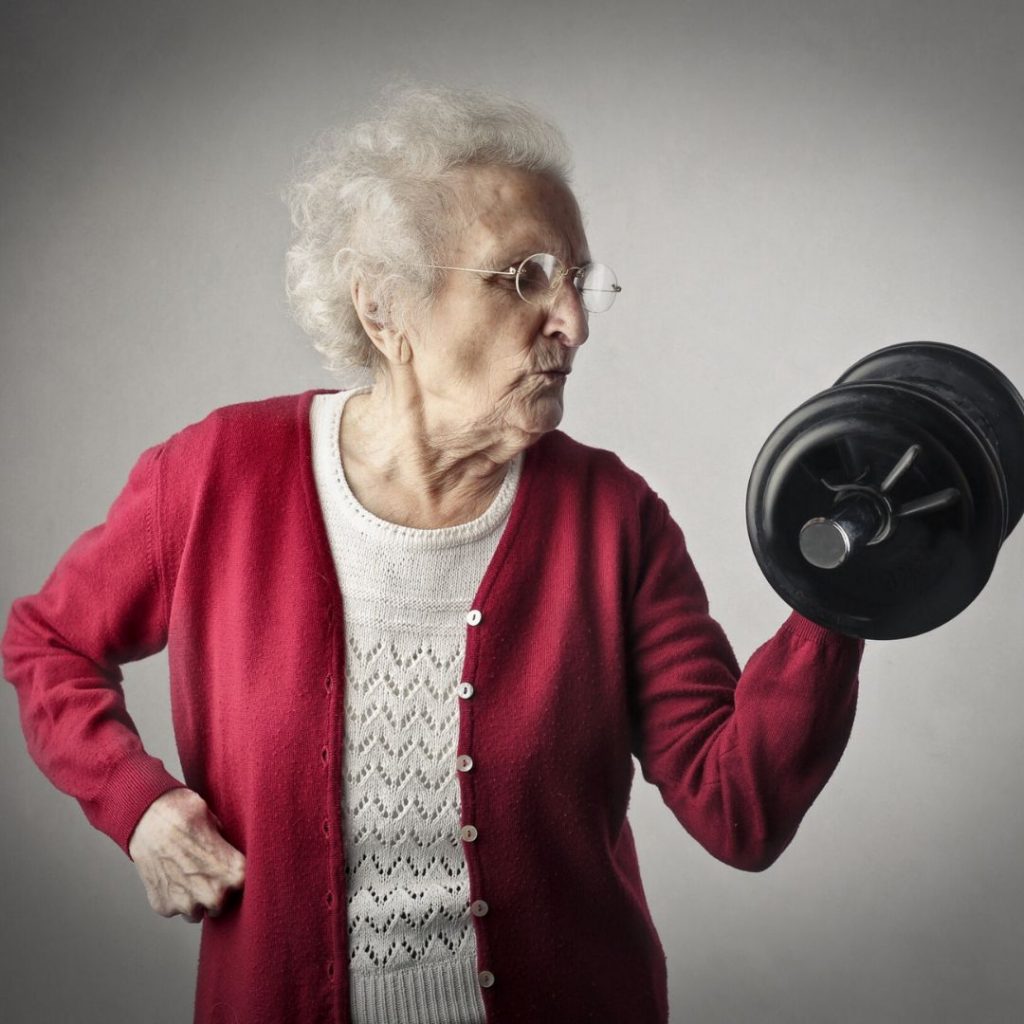
If you’re picturing those ripped people in the gym, forget it. That’s not me. I lift light weights at home. My goal is to reduce stress on my body and increase my muscle strength and flexibility.
Lifting light weights using a free routine (plenty of exercises available on YouTube) provides all the benefits I need. My musculature bulks up very quickly. My goal is to keep my muscles lean through more reps with lower weights.
When paired with regular walking, lifting weights is a balanced exercise plan. Walking keeps your lower body bones strong while lifting keeps your upper body bones strong.
Please remember to let your body recover in between workouts. I incorporate 1- to 2-pound weights three times per week. As my body strengthens, I’ll focus on increasing repetitions.
5) Journaling

In my teen years, journaling was a way to pour out my thoughts, worries, and problems. Daily journaling, even if it was to note what I did that day, kept everything flowing so I didn’t feel stuck (which can increase my stress).
Now I journal to keep track of things, to see patterns and the bigger picture. Pretty notebooks have been replaced with simple documents on my laptop. I’m far more likely to quickly open the document and type for a few minutes than I am to stop, grab my journal, and find a quiet place to think. Less pressure + fewer reasons to postpone writing = success.
Journaling has become my way to enjoy hindsight. When I was young, I relied on my parents to provide an overview of my life. “When you were five you could barely ice skate. Look how well you skate now!”
It’s too easy to feel like I’m making zero progress when, in fact, I’m just moving forward slowly. Looking back to where I started and seeing how I’ve consistently committed to accomplishing a dream sparks in me a feeling of success and gratitude.
One of our sons has been journaling his daily vitals for years. He’s found it especially useful during times of very little progress. He can focus on the momentum that he’s created and know that all his efforts aren’t in vain. He’ll reach his goals in the fullness of their time.
What are some of your favorite stress reduction techniques?
Lisa
Disclosure: Please note this post may contain affiliate links. This means – at no additional cost to you – we earn a commission if you make a purchase using our links. We only link to products and companies we use and recommend. The income goes toward supporting the free content on this site.
